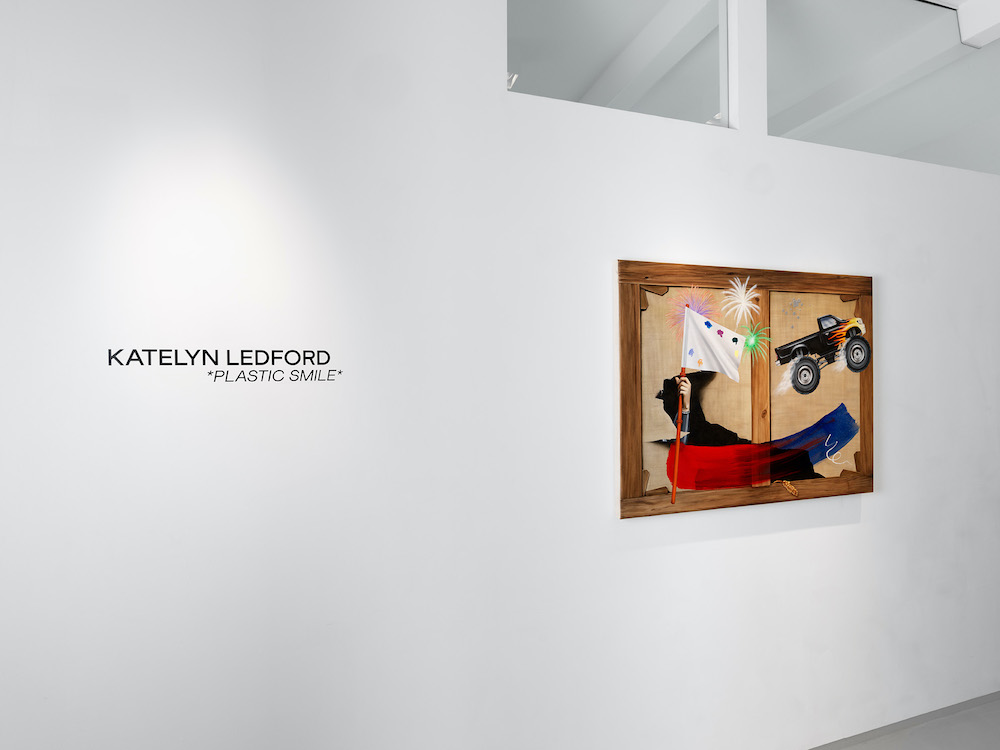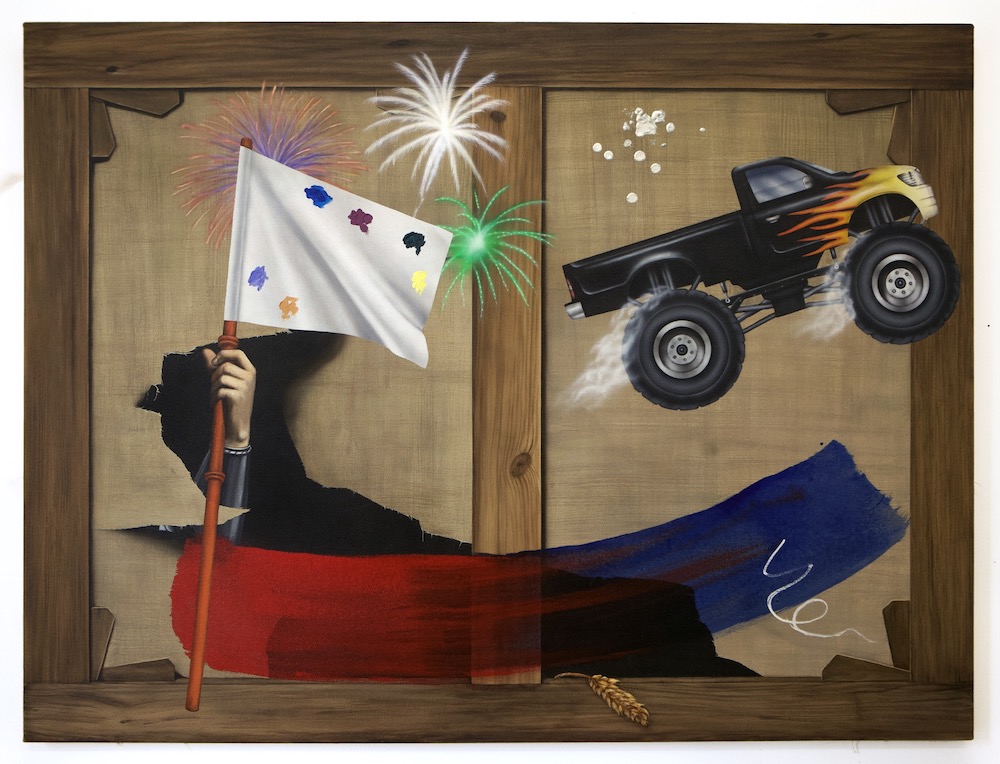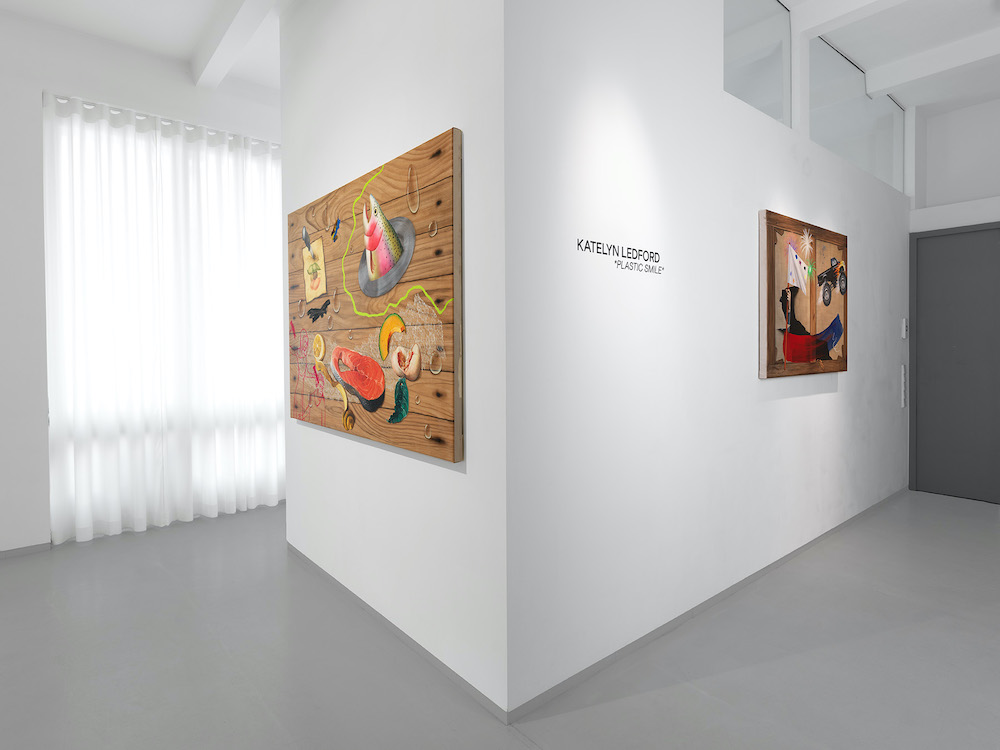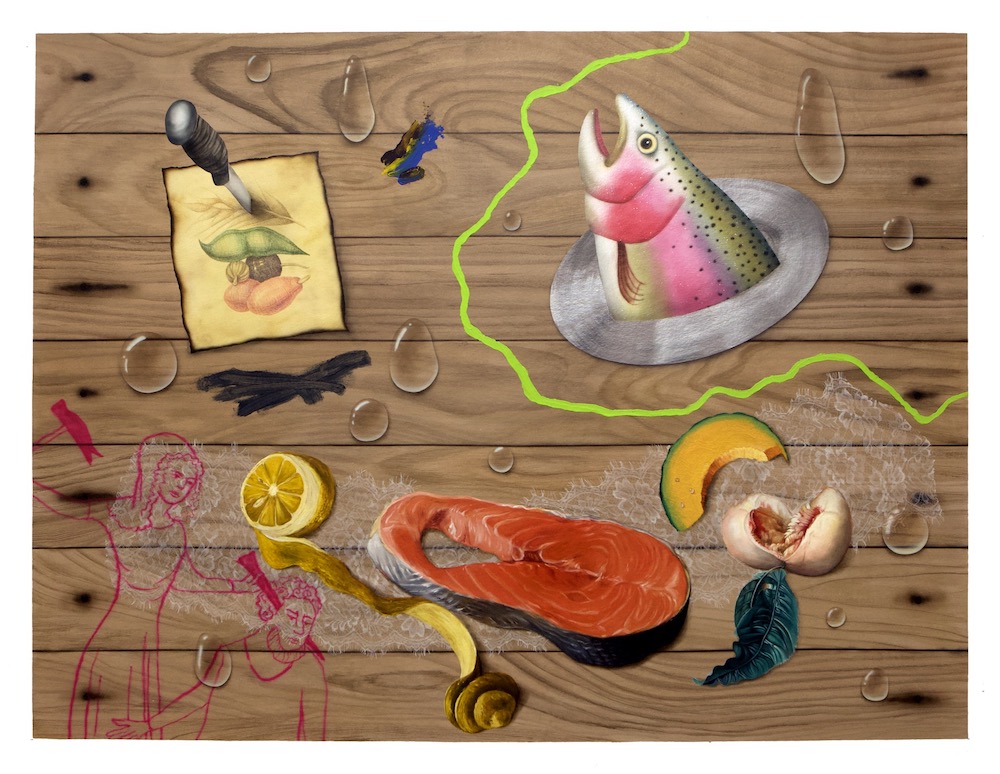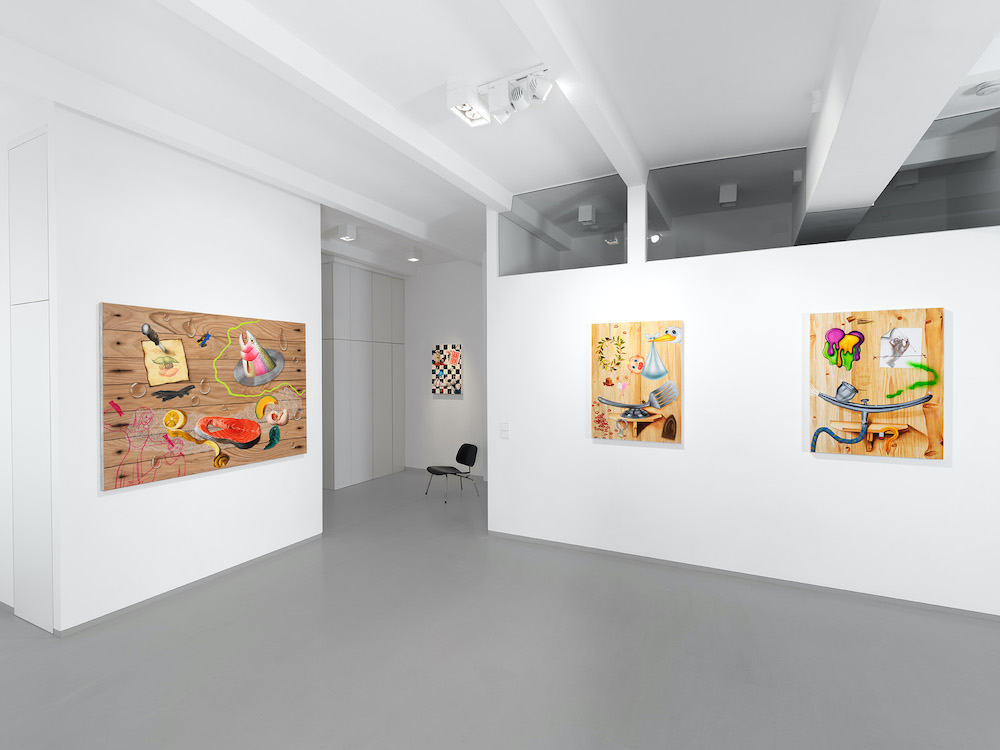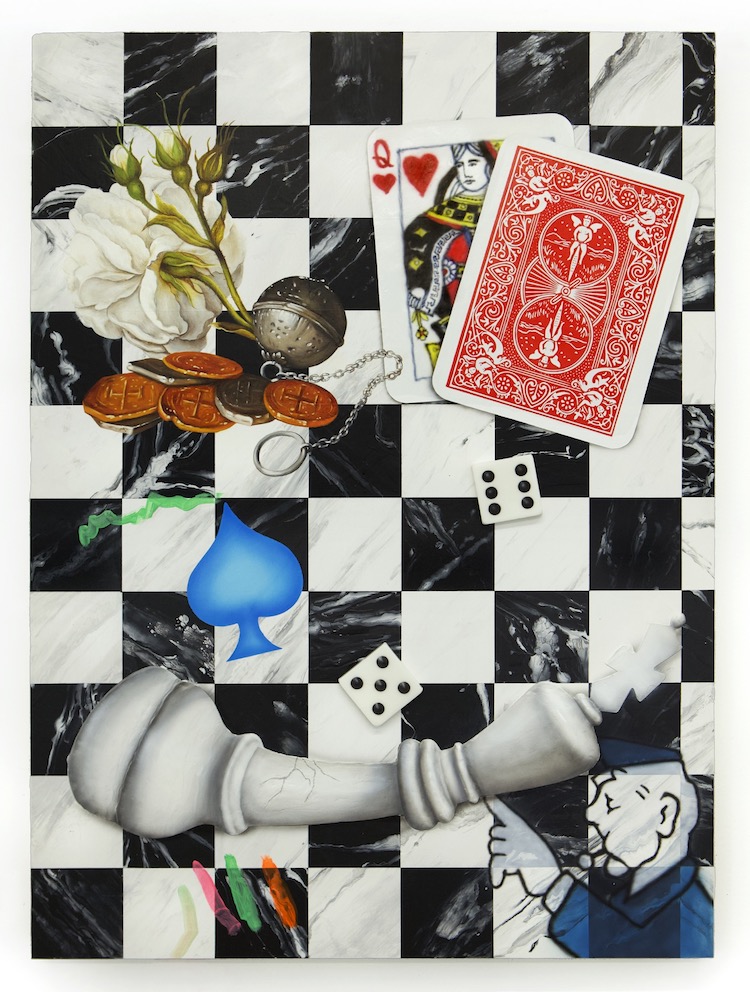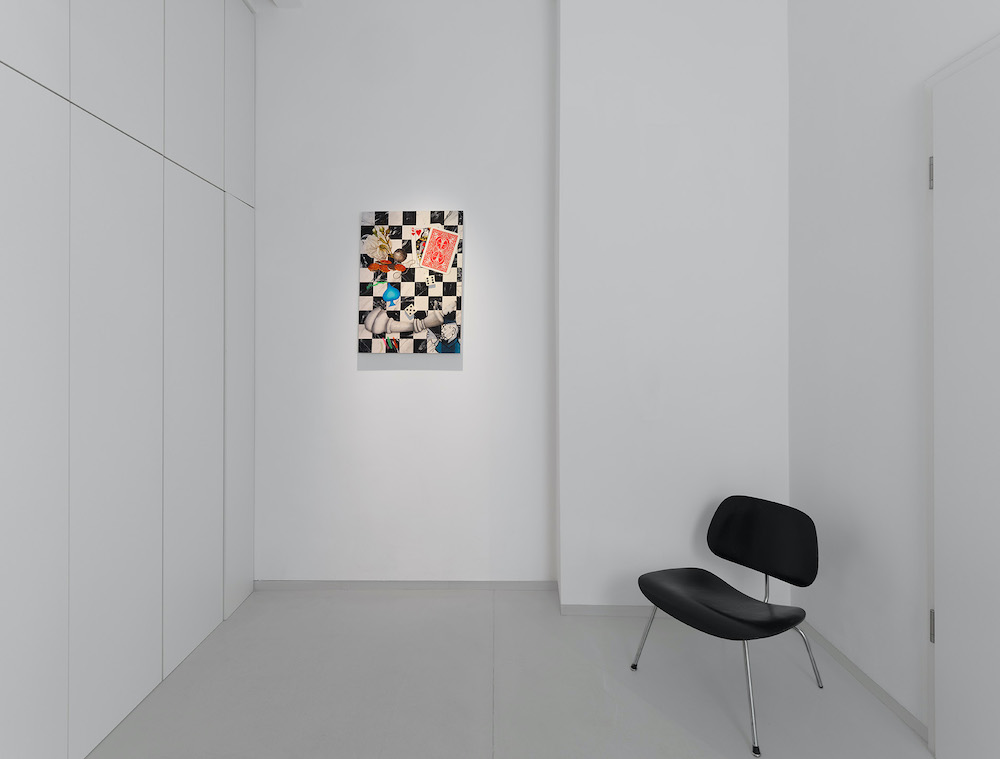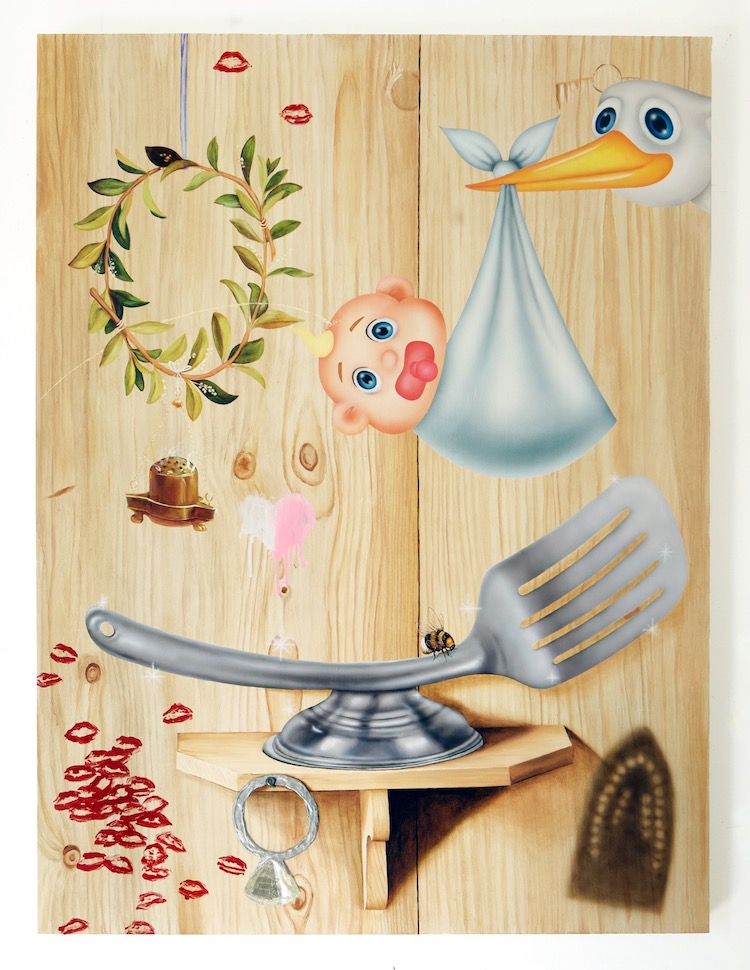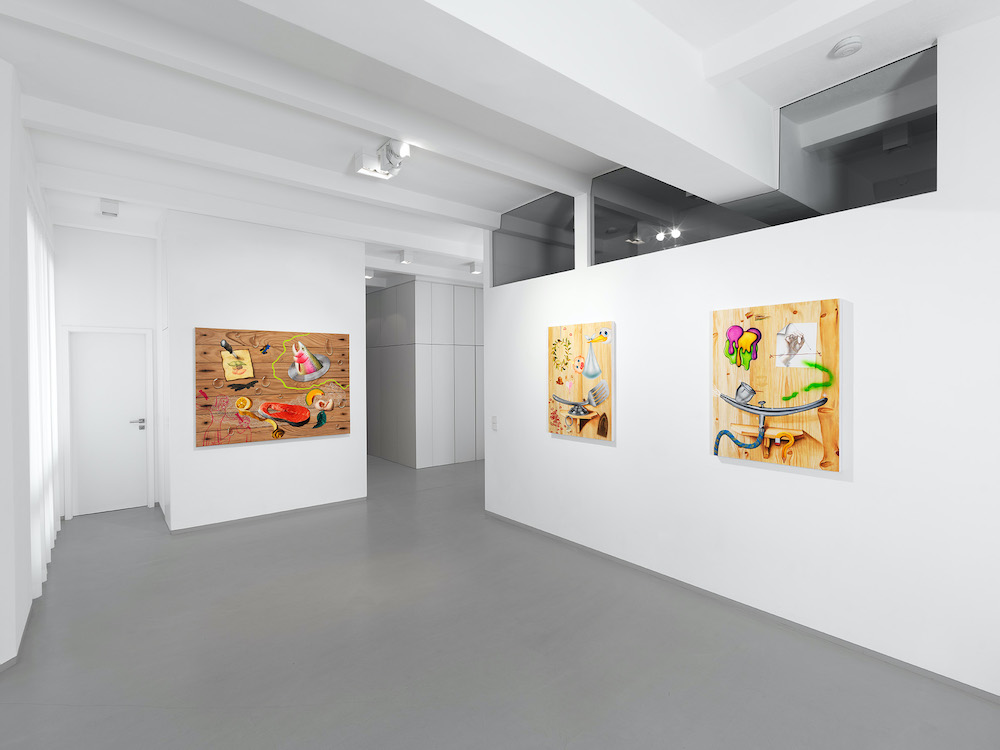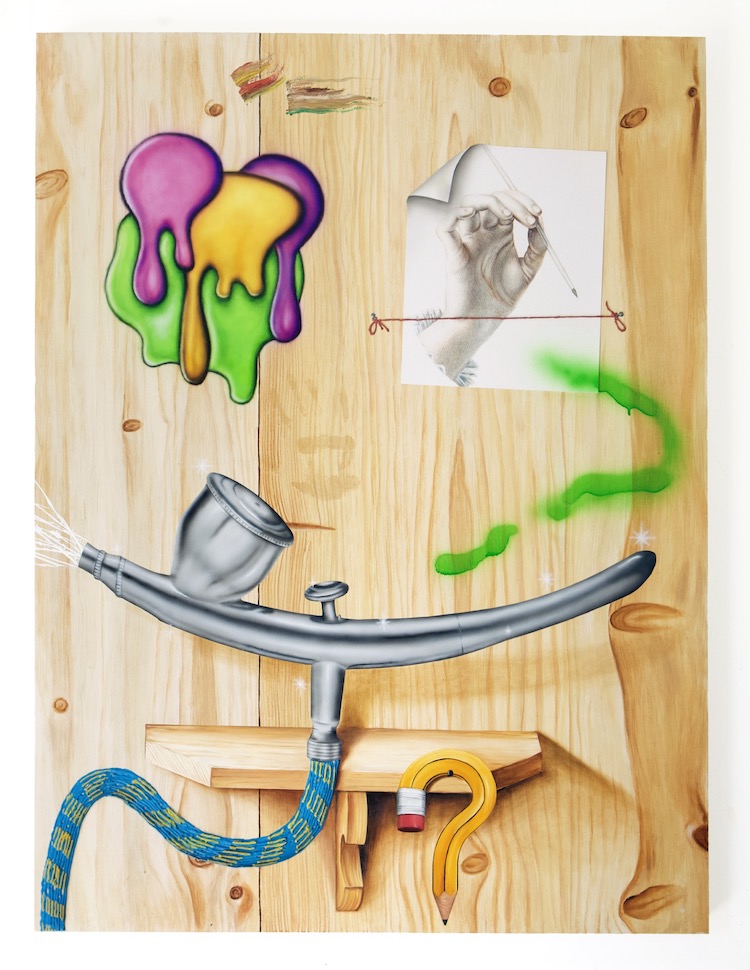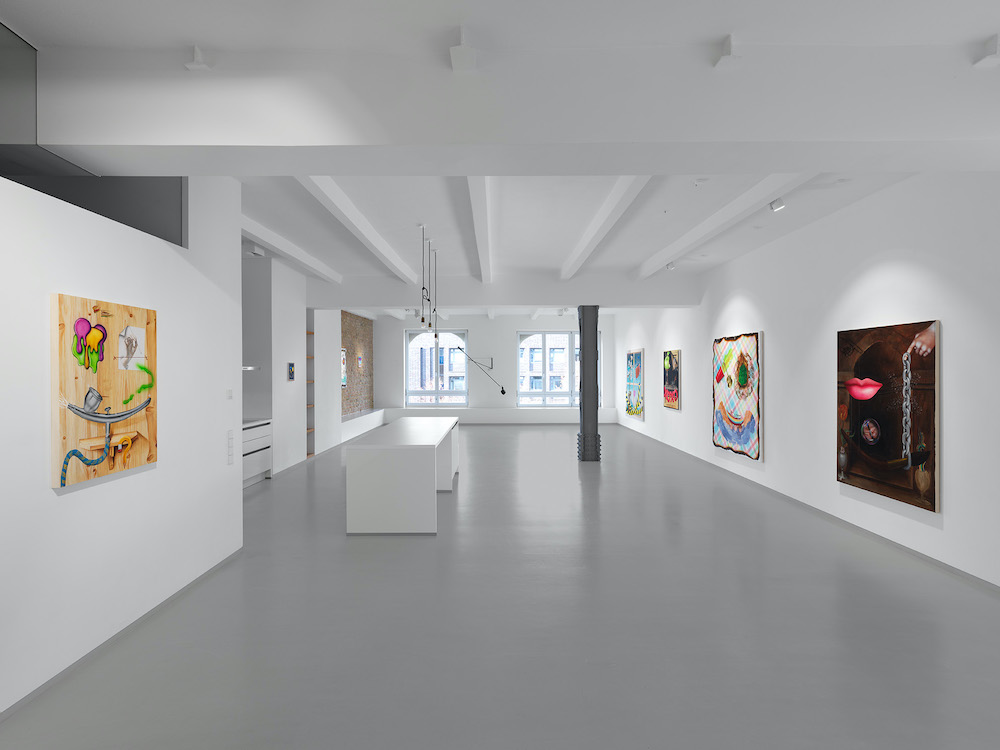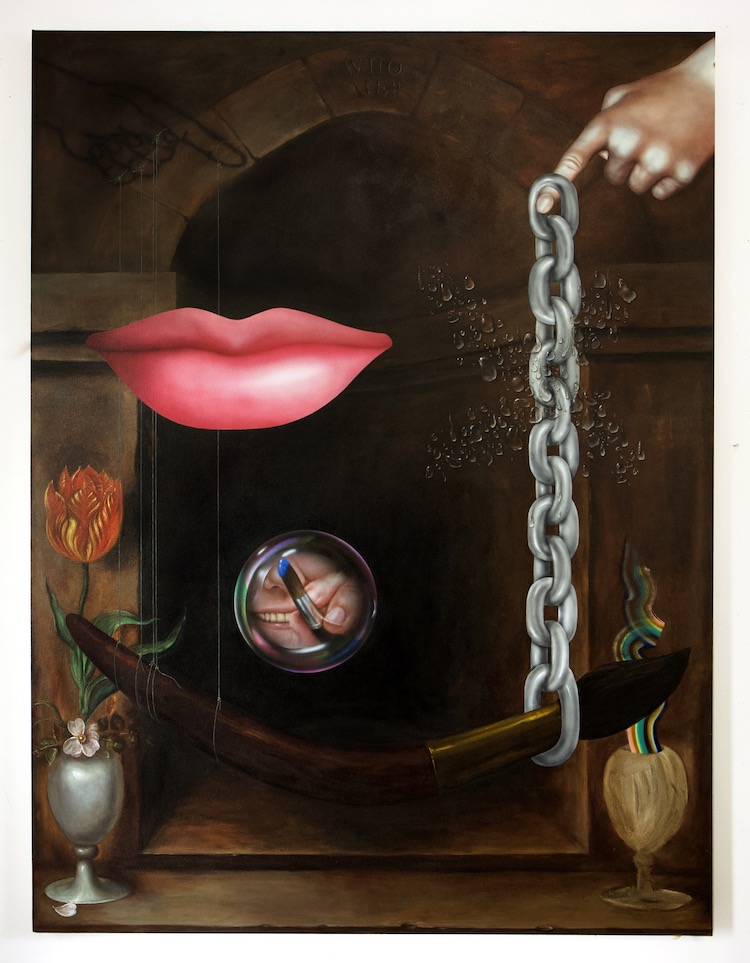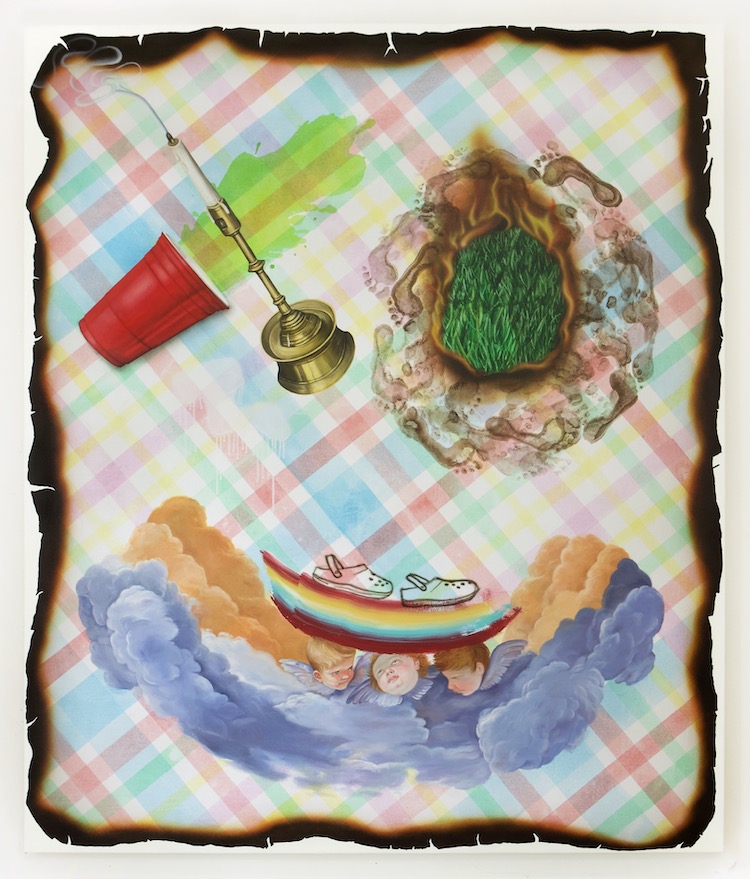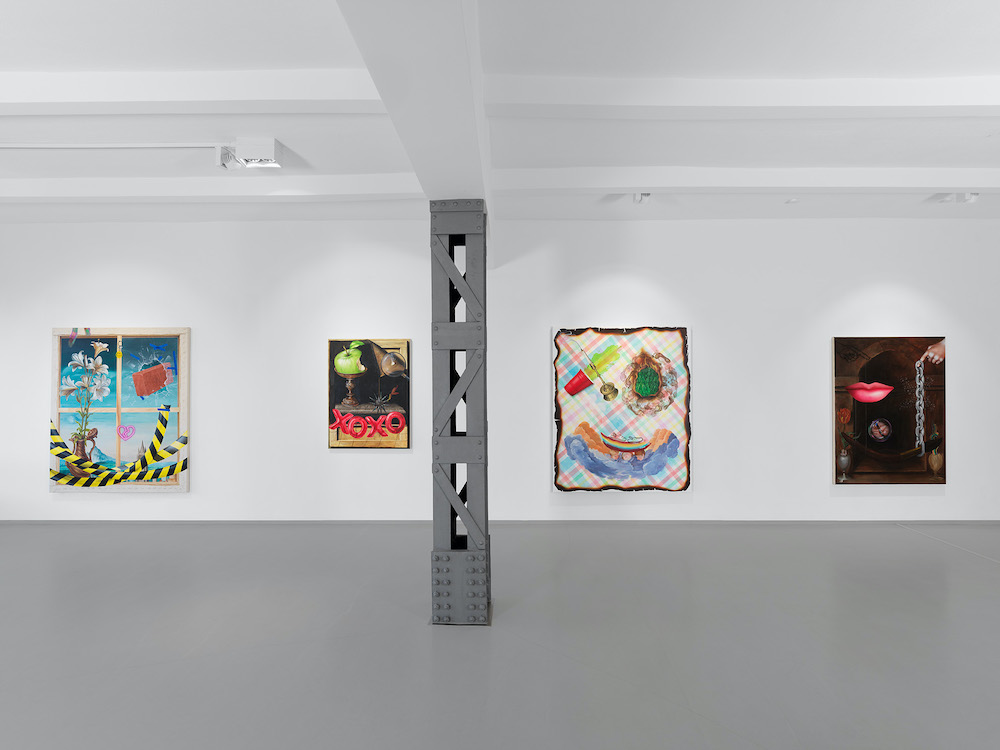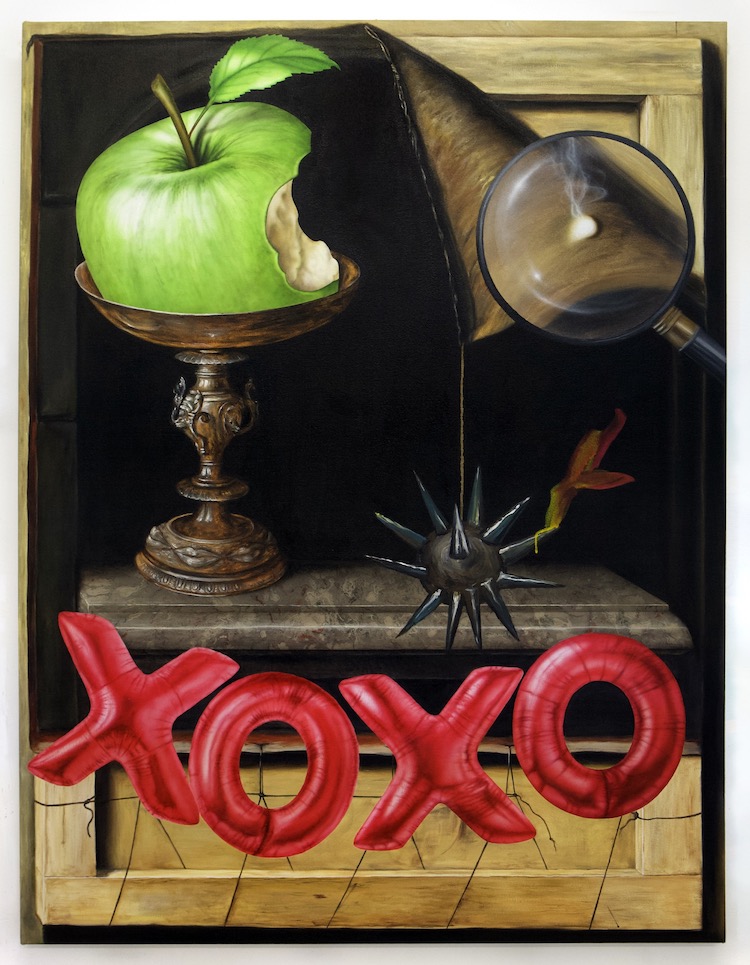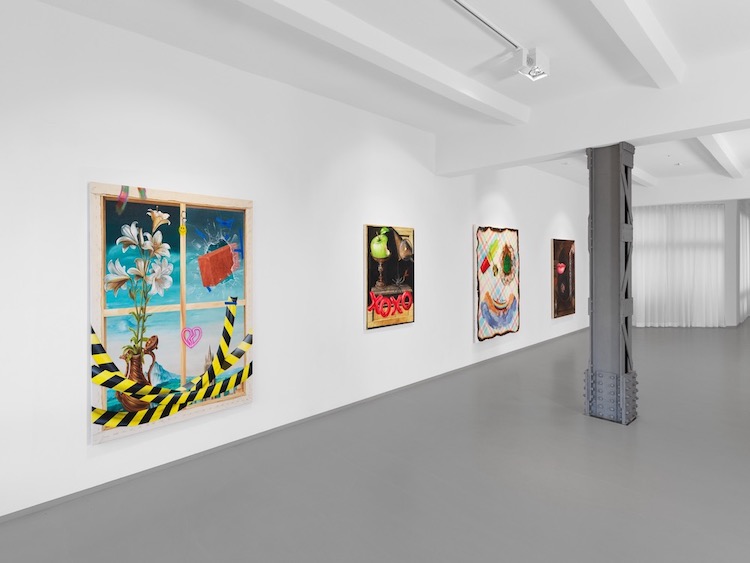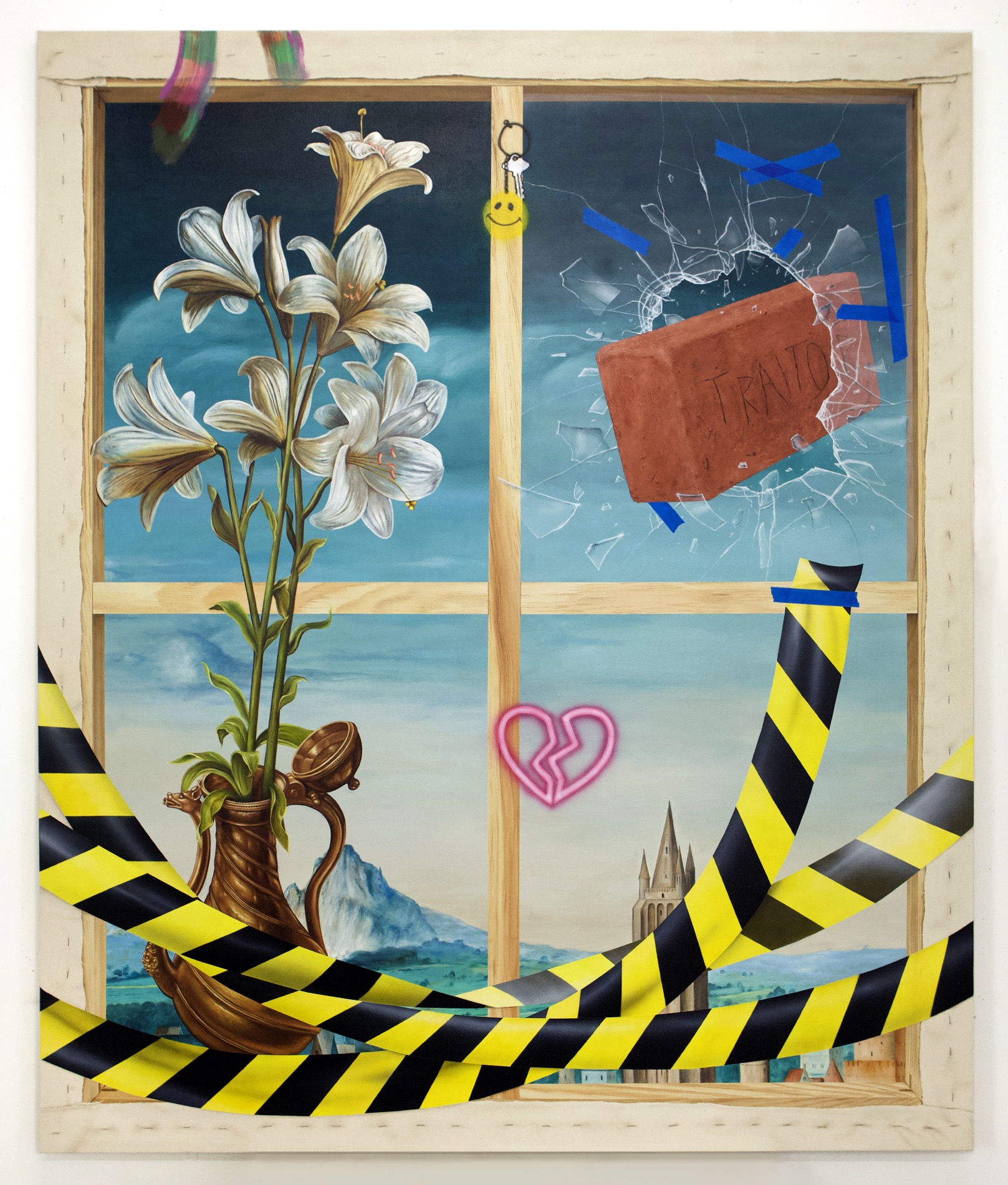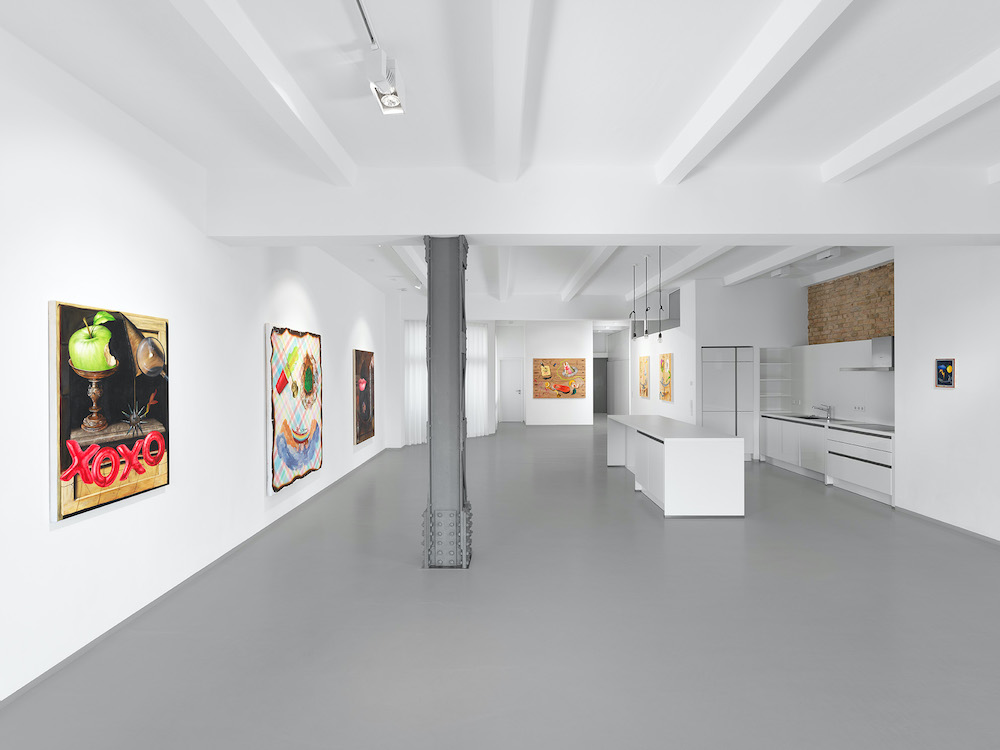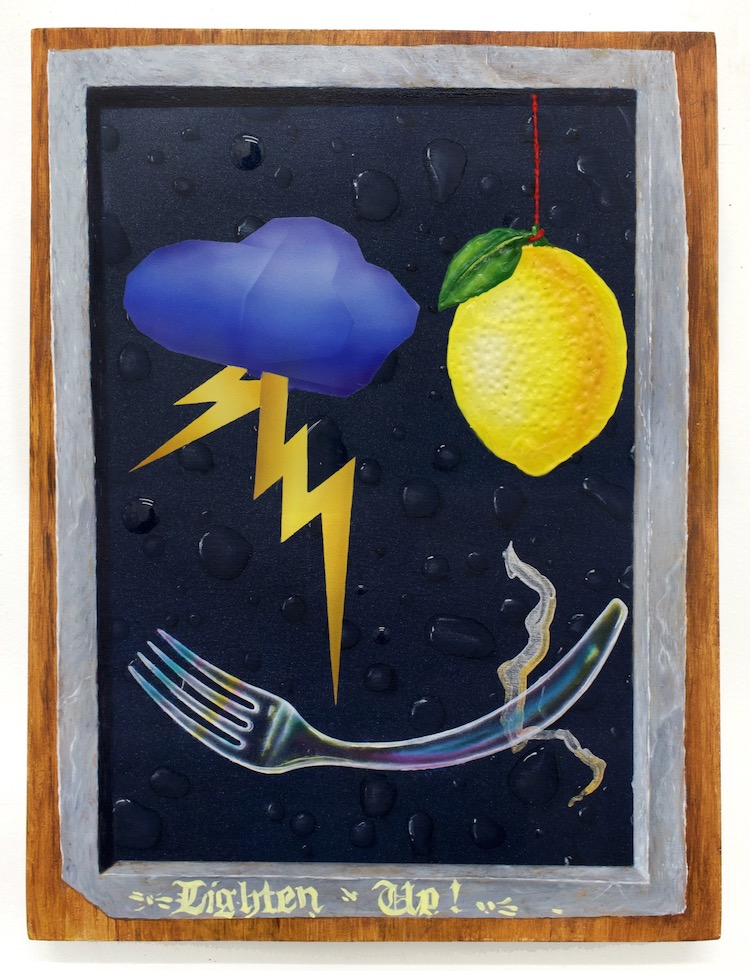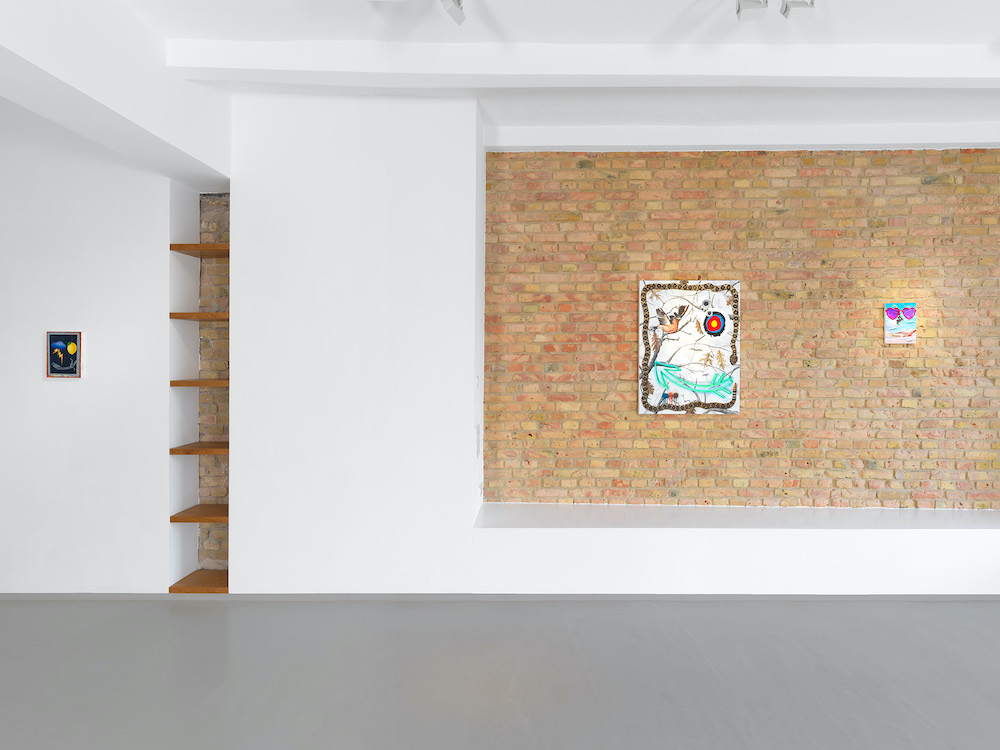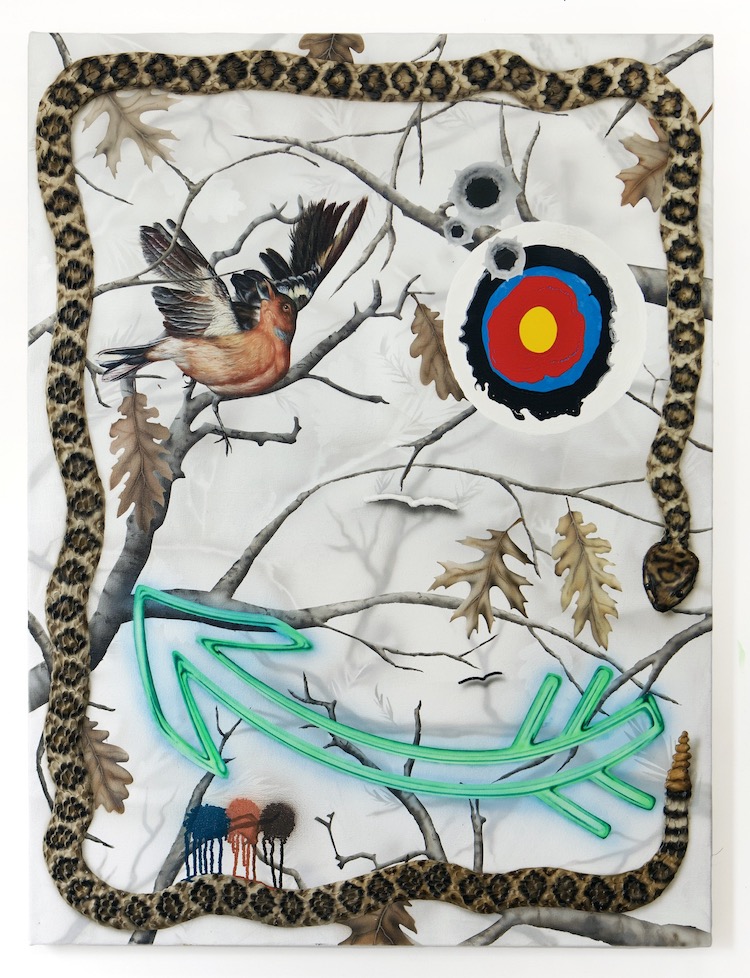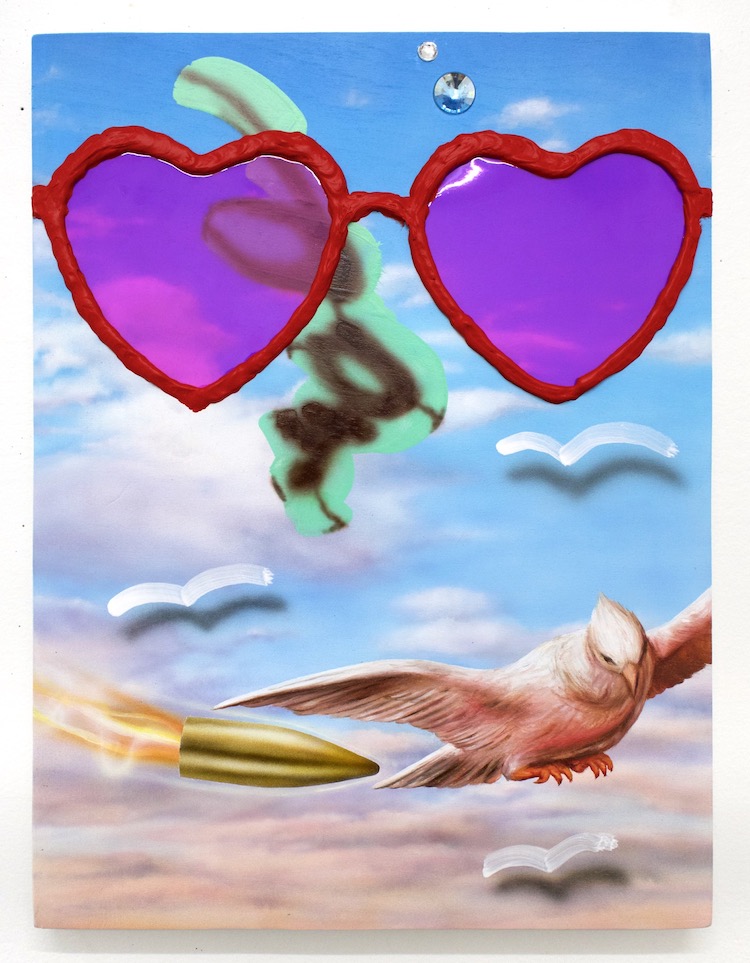There are extremely thin and inexplicable analogies and relationships between the sophisticated cultural tradition and everyday life in the American South. Katelyn Ledford used precisely those as a starting point for her big European solo debut which is now on view at Duve Gallery in Berlin.
Raised surrounded by the kitsch Alabama decor instead of art history museums yet growing up deeply connected and appreciative of European painting history, she created a body of work that is unapologetically busting through the door of traditional conventions with a visual Jambalaya of sorts. Plastic Smile comprises a suite of new mixed media paintings in which Ledford uses the highly recognizable smile shape to lure the viewer’s attention into reading their complex content. Employing the literal assemblages of elements that vaguely reminiscence of the eyes and the mouth, the Boston-based artist is appropriating the human face format as a slaphappy template within which she discusses subjects of her interest. Utilizing the humor as a hard-to-resist bait, she’s repurposing the generally negative perception of the term “plastic” and takes the control back as she speaks about truthfulness, superficiality, or cynicism. At the same time, this body of work is a nod to the rare, awkward smile grimaces in old portraits. This ambiguous duality between the humorous and serious appoints the viewer with the role of a decision-maker in terms of which way to view and read these paintings.
The ambiance of absurdity, evoked by the eclectic mix of utterly mismatched and jarring elements, is informed by the digital technology-imposed saturation of visuals and the chronic lack of hierarchy between them. Such seriously conceptualized paintings are repurposing the polished photorealistic painting skill to create amalgamations of symbols, visual triggers, and an endless range of references, from the history of art to the emoji language. Varying in techniques used, from believable trompe l'oeil deceptions to applying the paint straight out of the tube, slapping up ready-made objects, or literally kissing the canvas, Ledford is confidently teetering on kitsch only to cleverly subvert it into a meaningful metaphor. By destroying and bastardizing appropriated imagery from historical works, she is constructing a lie or a joke that the viewer is invited in on. Armed with humor, subtlety, irony, sour and sweet, a touch of scorned woman anger, and never EVER taking herself too seriously, Ledford is wickering the South’s Gingham pattern into European painterly tradition while busting through the door of traditional conventions and unreservedly announcing, “Hey, what’s up! I’m here y’all!!” —Sasha Bogojev

